Bees may just be some of the most interesting insects in the world. Not only are we dependent on them to pollinate some of the most important crops in the world, but they also produce some of the most useful products humans need (wax and honey) to make candles, chapstick, cleaning products, sweeteners, and so much more. A world without bees is a world without a lot of the things we love. Today, we are going to take a deep look into some of the most interesting features of bee anatomy in order to understand what makes them special. Let’s get started.
7 Interesting Facts About Bee Anatomy
1. Bees have three main sections to their bodies (and have a honey stomach)
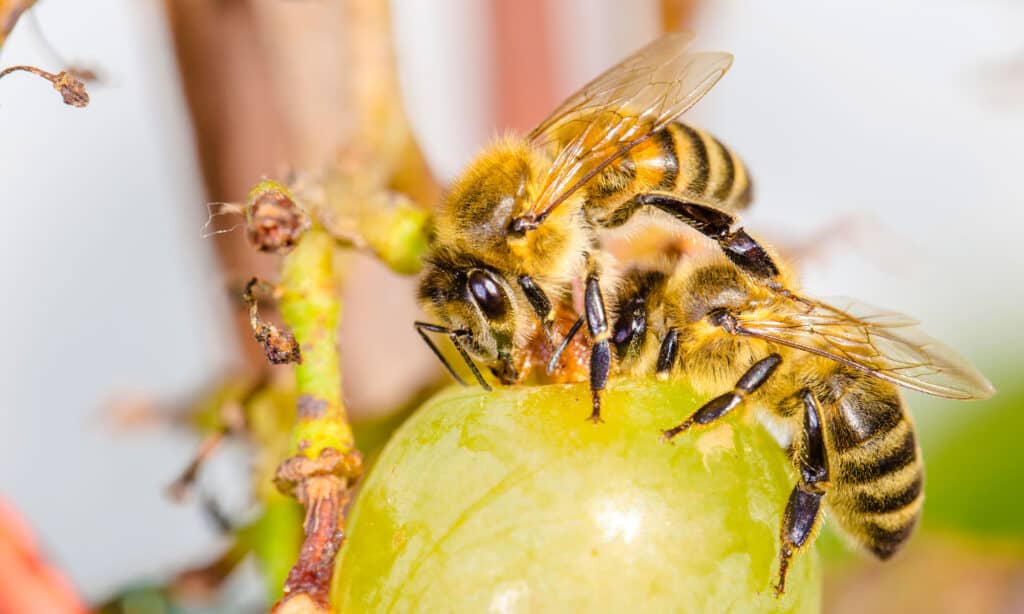
Bee’s bodies can be split into three sections, the head, thorax, and abdomen.
©Haiduchyk Aliaksei/Shutterstock.com
Bees have three main sections for their bodies: head, thorax, and abdomen. The head is responsible for the bee’s senses and brain, and contains the brain, eyes, mouth, and antennae. The thorax houses the wings and legs and make up the middle portion of the bee’s body. The abdomen contains the digestive and reproductive systems, as well as the honey stomach used to carry nectar. The bee’s stinger, located at the end of the abdomen, is used for defense and is connected to a venom organ inside the abdomen. All-together, these three portions of the body aren’t just unique to bees, but most insects.
2. Bees have compound eyes
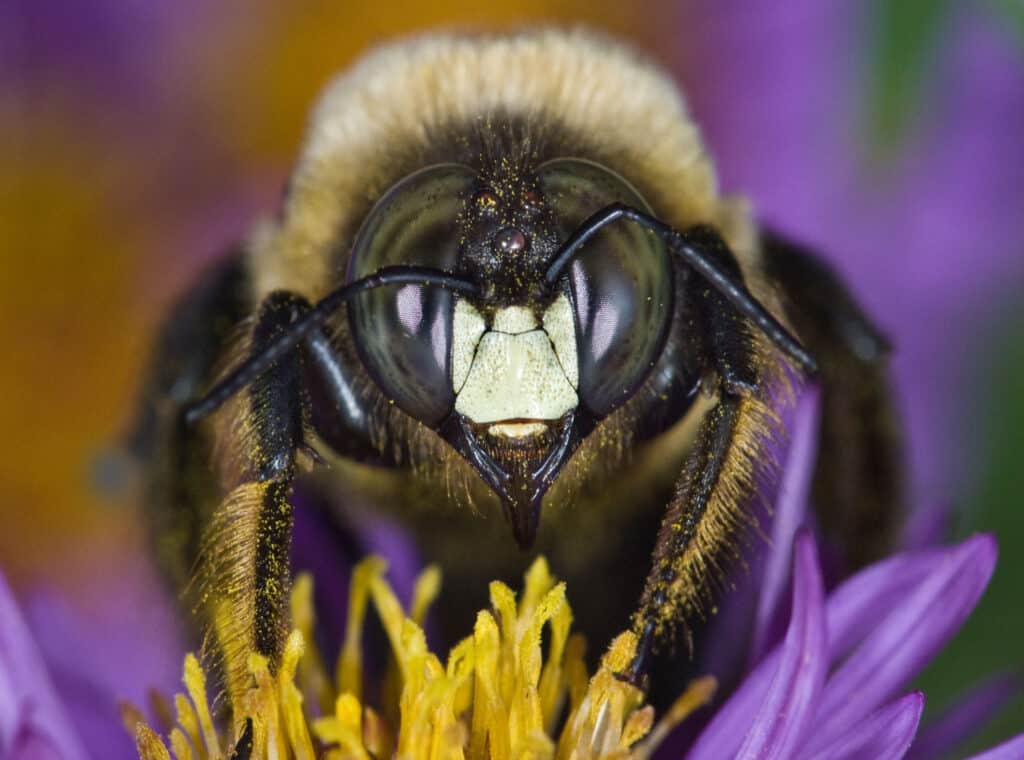
Bees have compound eyes, while
humans
have camera-lens eyes.
©Gerry Bishop/Shutterstock.com
Bees have a special type of eyes called compound eyes. Compound eyes are made up of many tiny lenses that work together to give the bee a wide field of vision and can be found on almost every insect alive today. These eyes allow bees to see in all directions and detect movement, color, and light, but they aren’t great at focusing on things. Humans, for reference, have single-lens eyes known as “camera lens eyes”. These eyes are much bigger than a bee’s eyes, but they only see what is directly in front of them. Humans also have color vision, but our eyes work differently than a bee’s compound eyes. Instead of having many tiny lenses, we have one big lens that focuses light onto our retina. This allows us to see fine details.
3. Bees have six legs
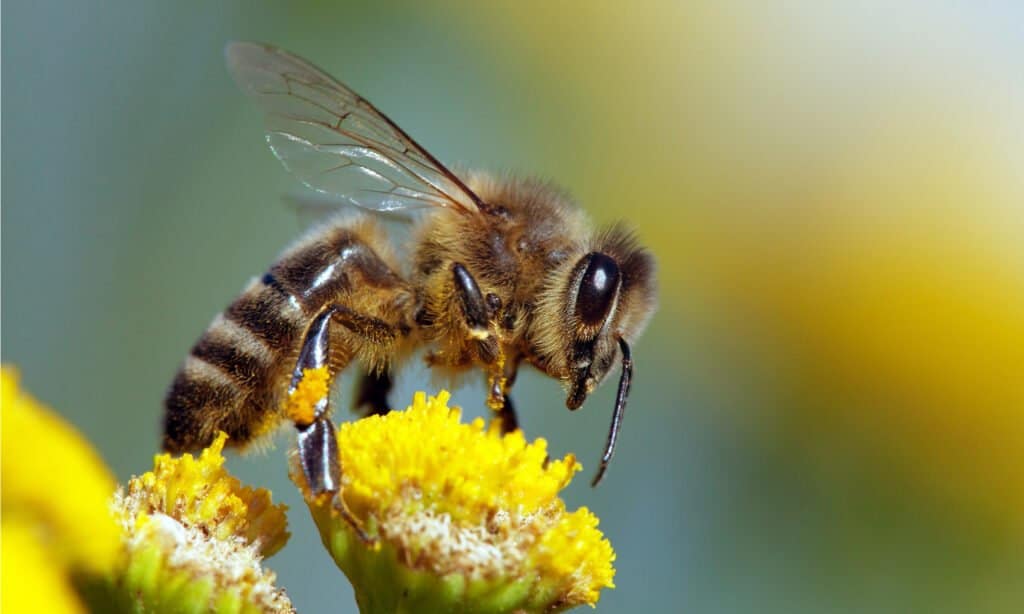
Like most insects, bees have six legs.
©Daniel Prudek/Shutterstock.com
Bees have six legs, like most other insects. Their legs are specialized for different functions like grasping, grooming, and walking. The number of legs does vary among insects, but most have six legs on each side, two legs on their abdomen, and four on their thorax. The legs of insects, including bees, are covered in fine hairs that help them grip and move and can be used for communication and sensation.
4. Bees have small hooks on their wings to keep them in sync
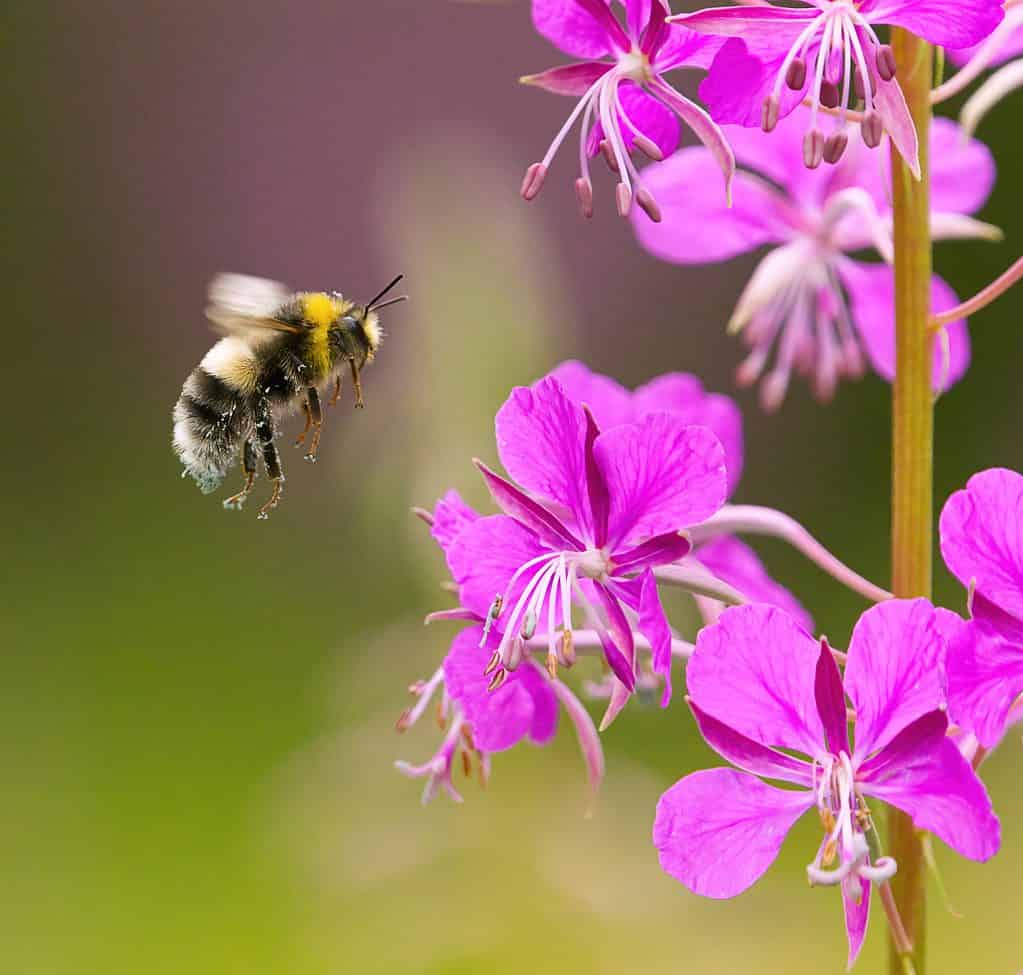
The small hooks on a bee’s wings are called hamuli.
©Henri_Lehtola/Shutterstock.com
Bees have small hooks on their wings that help keep them in sync while flying. These hooks, called hamuli, allow the bee’s wings to lock together, creating a strong and stable surface for flight and keeping them locked together. By staying locked together, the stronger wings can help maintain the bee’s wing beat and rhythm, helping them to fly further and more efficiently. The presence of hamuli sets bees apart from other flying insects (although some wasps also have them) and is likely the result of the evolutionary benefit they receive from the extra lift.
5. Bees have a straw-like tongue for sucking nectar from flowers
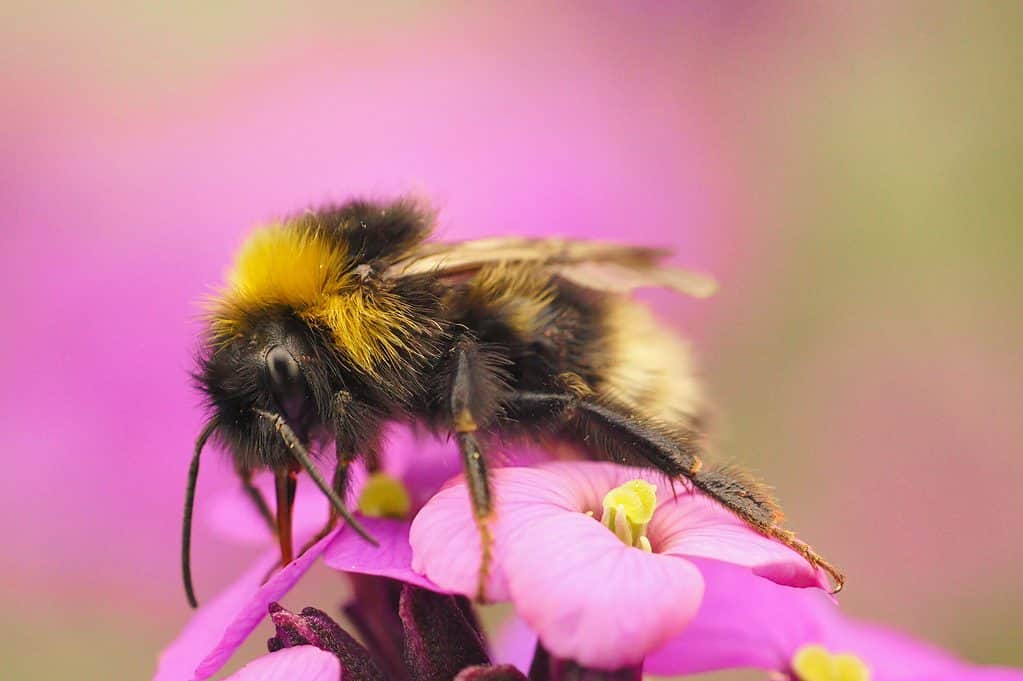
Bees have a flexible tongue that acts like a straw for nectar.
©HWall/Shutterstock.com
Bees have a special tool for gathering nectar from flowers – a straw-like tongue! This tongue, also known as a proboscis, helps them suck up nectar from deep within flowers. The bee rolls out its proboscis, dips it into the flower, and then sips up the nectar. This nectar is stored in a special part of the bee’s stomach called the honey stomach. The bee then returns to the hive and passes the nectar on to other bees, who will use enzymes to break it down into honey. This honey is used as food for the colony and provides the energy the bees need to fly and gather more nectar. A few other insects have a proboscis, including butterflies, moths, flies, and even mosquitos, only theirs is specially adapted to be sharp and suck blood, not nectar. All bee anatomy has a special evolutionary purpose!
6. Humans thought bee flight was physically impossible for many years
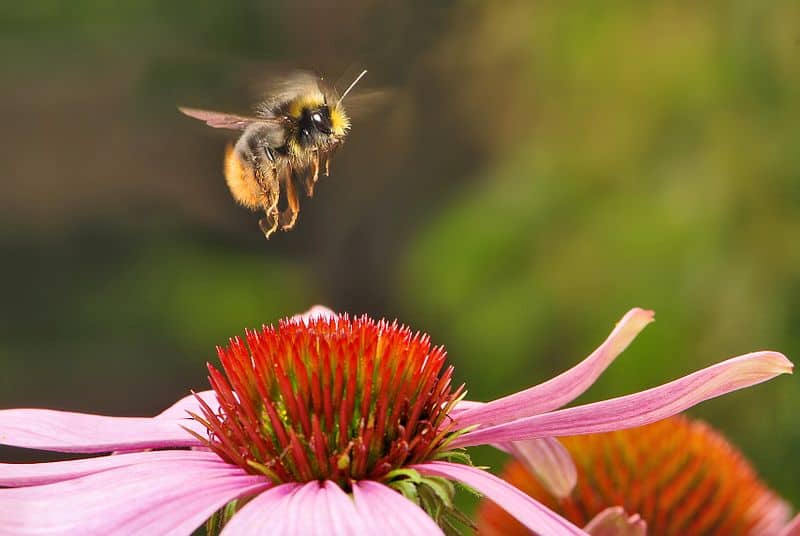
Humans were astonished that
bumblebees
could actually fly until they studied them more closely.
©Ernie – Public Domain
For many years, humans thought that bee flight was physically impossible. The rapid, agile flight of bees seemed to violate the laws of aerodynamics and defy explanation. Scientists (especially French entomologist August Magnan) struggled to understand how, with bee anatomy, they could stay aloft and maneuver so effortlessly. It was only through detailed studies and observations that scientists were eventually able to uncover the secrets of bee flight. Even today, the myth abounds that bees aren’t designed for flight, although it isn’t necessarily true; humans just didn’t know the mechanisms that allowed it to happen for a little while.
7. Bees Have an Exoskeleton, Not An Internal Skeleton
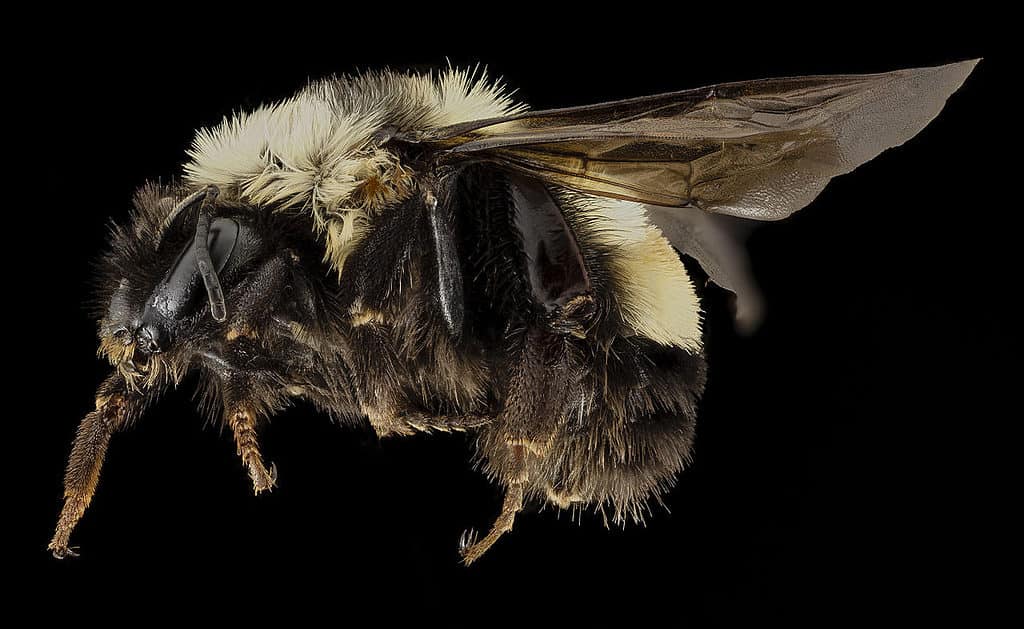
Instead of an internal skeleton, bees have something called an “exoskeleton”.
©USGS Bee Inventory and Monitoring Lab from Beltsville, Maryland, USA / public domain – License
Bees have a special kind of body covering called an exoskeleton, instead of an internal skeleton like people have. An exoskeleton is a hard, outer layer that protects the bee’s body and helps it move. It is made of a material called chitin, which is strong and lightweight. The exoskeleton provides support and protection for the bee, and also helps it maintain its shape. Unlike an internal skeleton, the exoskeleton doesn’t grow with the bee, so the bee has to shed its old exoskeleton and grow a new one as it grows.
Up Next:
- What Would Happen if Bees Went Extinct?
- How Many Bees Are In The World?
- Do (Honey) Bees Poop? And Other Bodily Functions Explained
The photo featured at the top of this post is © Daniel Prudek/Shutterstock.com
Thank you for reading! Have some feedback for us? Contact the AZ Animals editorial team.






